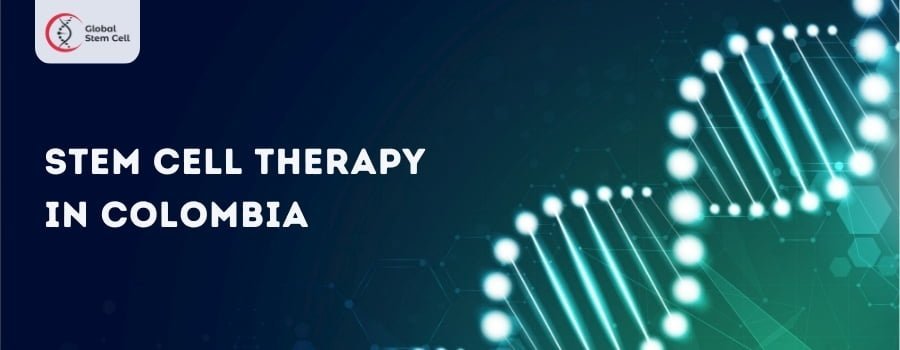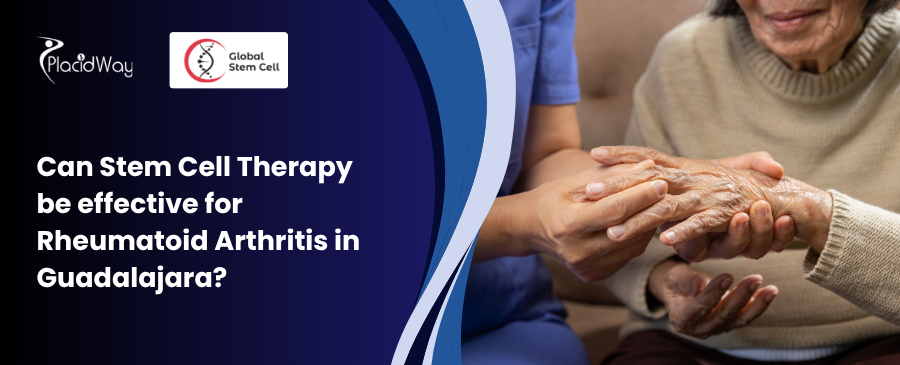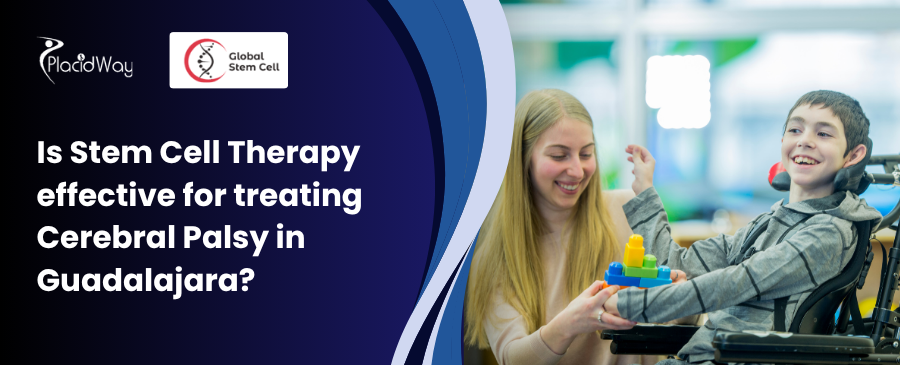
Stem cell therapy is a treatment that’s gaining attention worldwide for its potential to help with various medical conditions. In Colombia, this therapy is becoming more popular too. This guide aims to explain what stem cell therapy is all about, how it works, and why people are interested in it.
We’ll also look at how Colombia regulates this treatment and where you can find clinics offering it. Whether you’re curious about stem cell therapy or considering it as a treatment option, this guide will give you the information you need in clear, simple language.
Table of Content
Benefits of Stem Cell Therapy
Stem cell therapy holds immense potential in the medical field due to its ability to regenerate and repair damaged tissues and organs. Here are some of the key benefits:
- Tissue Regeneration: Stem cells have the unique ability to develop into different cell types in the body. This property makes them valuable for repairing damaged tissues and organs. For instance, stem cell therapy has shown promising results in regenerating heart muscle cells after a heart attack, restoring function in damaged nerve cells, and repairing cartilage in joints affected by osteoarthritis.
- Treatment of Various Diseases: Stem cell therapy offers potential treatments for a wide range of diseases and conditions, including neurodegenerative disorders like Parkinson’s and Alzheimer’s disease, autoimmune diseases like multiple sclerosis and lupus, diabetes, spinal cord injuries, and certain types of cancer. By replacing damaged or dysfunctional cells with healthy ones, stem cell therapy aims to alleviate symptoms or even cure these conditions.
- Reduced Risk of Rejection: Stem cells can be derived from a patient’s own tissues (autologous transplantation) or from compatible donors (allogeneic transplantation). Using a patient’s own stem cells reduces the risk of rejection or adverse immune reactions, making it a safer option for transplantation.
- Minimally Invasive Procedures: Many stem cell therapies involve minimally invasive procedures, such as injections or infusions, rather than major surgeries. This reduces the risks associated with invasive procedures, shortens recovery times, and may allow for outpatient treatments.
- Personalized Medicine: Stem cell therapy can be tailored to individual patients based on their specific medical conditions and genetic makeup. This personalized approach enhances treatment effectiveness and reduces the likelihood of adverse reactions.
- Potential to Reverse Aging Effects: While still in early stages of research, some scientists believe that stem cell therapy could potentially reverse certain effects of aging by replacing old or damaged cells with rejuvenated ones. This could have implications for age-related conditions and overall health span.
Why Choose Stem Cell Therapy in Colombia?

Choosing stem cell therapy in Colombia can offer several advantages:
- Advanced Medical Facilities: Colombia boasts modern medical facilities equipped with state-of-the-art technology and staffed by skilled healthcare professionals. Many hospitals and clinics in major cities like Bogotá, Medellín, and Cali adhere to international standards and offer specialized services, including stem cell therapy.
- Experienced Healthcare Professionals: Colombia has a well-trained medical workforce, including doctors, researchers, and technicians, who are experienced in stem cell therapy and other advanced medical procedures. Many healthcare professionals in Colombia have received training and education from reputable institutions around the world.
- Cost-Effectiveness: Medical treatments, including stem cell therapy, can be more affordable in Colombia compared to many Western countries. This cost-effectiveness can make Colombia an attractive option for patients seeking high-quality medical care at a lower cost.
- Regulatory Standards: Colombia has regulatory standards in place to ensure the safety and efficacy of medical treatments, including stem cell therapy. The country’s regulatory agencies oversee the approval and monitoring of stem cell therapies, providing patients with some assurance of quality and safety.
- Tourism Opportunities: Colombia’s rich cultural heritage, diverse landscapes, and vibrant cities make it an appealing destination for medical tourists. Patients seeking stem cell therapy in Colombia can combine their treatment with leisure activities, such as exploring historical sites, enjoying natural attractions, or experiencing Colombian cuisine and culture.
- Language Accessibility: Many healthcare professionals in Colombia are fluent in English, making it easier for international patients to communicate with their medical providers and navigate the healthcare system.
- Accessibility: Colombia’s geographic location makes it easily accessible from North and South America, as well as Europe. Major cities in Colombia are well-connected by air travel, making it convenient for patients traveling from abroad to access stem cell therapy.
Leading Stem Cell Therapy Clinics in Colombia
Colombia is rapidly gaining recognition for its advanced stem cell therapy options, offering patients cutting-edge treatments at accessible prices. Here’s a snapshot of the top clinics making waves in the field:
Alevy
Alevy Clinic is renowned for its innovative stem cell treatments focusing on joint pain and spinal issues. With state-of-the-art technology and a commitment to personalized care, Alevy provides effective solutions that have garnered high patient satisfaction. The clinic’s modern facilities and specialized approach make it a top choice for those seeking relief from orthopedic conditions.
Regencord
Regencord is a leader in regenerative medicine, specializing in orthopedic and chronic disease treatments. Known for its rigorous research and high success rates, Regencord offers comprehensive care that combines advanced techniques with personalized treatment plans. Patients appreciate the clinic’s focus on delivering effective results and its positive impact on quality of life.
Kyron
Kyron stands out for its expertise in treating autoimmune and neurological conditions. The clinic is celebrated for its use of cutting-edge technology and tailored treatment strategies. Kyron’s approach to stem cell therapy is centered around personalized care, aiming to address complex health issues with precision and effectiveness.
Stemwell
Stemwell provides a broad range of therapies for metabolic and autoimmune disorders. The clinic’s dedication to research and innovation ensures that patients receive the latest in stem cell treatment options. Known for its comprehensive support and positive patient feedback, Stemwell is a leading destination for those seeking effective and progressive therapies.
Metrixcell
Metrixcell is recognized for its specialization in sports injuries and age-related conditions. The clinic offers advanced treatment techniques and a professional approach, making it a preferred choice among athletes and active individuals. Metrixcell’s reputation for delivering high-quality care and successful outcomes contributes to its growing popularity.
Procedures of Stem Cell Therapy in Colombia
The procedures involved in stem cell therapy in Colombia typically follow a standardized protocol tailored to each patient’s specific condition and medical history. While the exact steps may vary depending on the clinic and the type of stem cell therapy offered, the following outlines a general overview of the typical procedures involved:
- Initial Consultation and Evaluation: The process begins with an initial consultation with a qualified medical professional specializing in stem cell therapy. During this consultation, the patient’s medical history, current health status, and treatment goals are reviewed. Diagnostic tests, such as imaging studies or laboratory tests, may be conducted to assess the extent of the patient’s condition and determine their eligibility for stem cell therapy.
- Treatment Planning and Informed Consent: Based on the evaluation results, the medical team develops a personalized treatment plan tailored to the patient’s needs. The proposed treatment plan, including the expected benefits, potential risks, and alternatives, is thoroughly discussed with the patient. Informed consent is obtained from the patient before proceeding with the treatment.
- Stem Cell Harvesting: Depending on the type of stem cell therapy chosen, stem cells may be sourced from various tissues, including adipose tissue (fat), bone marrow, or umbilical cord tissue. The harvesting procedure is typically performed under local anesthesia or mild sedation to minimize discomfort. For adipose-derived stem cells, a small amount of fat tissue is usually extracted via liposuction. Bone marrow-derived stem cells may be obtained from the pelvic bone using a needle aspiration technique. Umbilical cord-derived stem cells are collected from donated umbilical cord tissue.
- Stem Cell Processing and Isolation: Once harvested, the collected tissue undergoes processing and isolation to extract the stem cells. Advanced laboratory techniques are employed to separate and concentrate the stem cells from other cellular components. This process may involve enzymatic digestion, centrifugation, and filtration to obtain a purified stem cell product suitable for therapeutic use.
- Stem Cell Administration: The concentrated stem cell product is then administered to the patient using various delivery methods, such as injections, infusions, or localized implantation. The route of administration depends on the targeted area of treatment and the patient’s medical condition. Stem cells may be injected directly into the affected tissue or delivered systemically via intravenous infusion to exert their regenerative effects.
- Post-Treatment Care and Follow-Up: Following stem cell administration, patients are monitored closely for any adverse reactions or complications. Depending on the type of treatment and the patient’s response, additional supportive therapies or rehabilitation may be recommended to enhance the outcomes of stem cell therapy. Regular follow-up appointments allow the medical team to assess the patient’s progress, address any concerns, and make adjustments to the treatment plan as needed.
- Long-Term Monitoring and Maintenance: Long-term monitoring and follow-up care are essential to evaluate the durability and effectiveness of stem cell therapy over time. Patients are encouraged to maintain regular communication with their healthcare providers and adhere to recommended lifestyle modifications to optimize the benefits of treatment and support overall health and well-being.
Conditions Treated with Stem Cell Therapy in Colombia
Stem cell therapy shows promise in treating a wide range of medical conditions and diseases. While research is ongoing and the efficacy of stem cell treatments for some conditions is still being studied, there are several conditions for which stem cell therapy has demonstrated potential benefits. Here are some examples:
Orthopedic Injuries and Conditions
- Osteoarthritis: Stem cell therapy may help reduce inflammation and promote cartilage regeneration in joints affected by osteoarthritis, potentially relieving pain and improving mobility.
- Tendon and ligament injuries: Stem cells may facilitate tissue repair and regeneration in damaged tendons and ligaments, aiding in the healing process and restoring function.
- Bone fractures: Stem cells have the potential to accelerate bone healing and improve fracture repair by promoting the formation of new bone tissue.
Neurological Disorders
- Parkinson’s disease: Stem cell therapy holds promise for replacing damaged dopamine-producing neurons in the brain, potentially improving motor symptoms and slowing disease progression.
- Alzheimer’s disease: While still in early stages of research, stem cell therapy may help regenerate lost brain cells and enhance cognitive function in individuals with Alzheimer’s disease.
- Spinal cord injuries: Stem cell transplantation may promote neural regeneration and repair damaged spinal cord tissue, potentially restoring motor and sensory function in patients with spinal cord injuries.
Cardiovascular Diseases
- Heart disease: Stem cell therapy may stimulate the regeneration of heart muscle tissue damaged by heart attacks or other cardiovascular conditions, improving cardiac function and reducing symptoms.
- Peripheral artery disease: Stem cells may promote the formation of new blood vessels and improve blood flow to affected areas in individuals with peripheral artery disease, reducing symptoms such as pain and cramping.
Autoimmune Disorders
- Multiple sclerosis (MS): Stem cell transplantation, particularly hematopoietic stem cell transplantation (HSCT), may reset the immune system and reduce autoimmune attacks in individuals with MS, potentially slowing disease progression and improving symptoms.
- Rheumatoid arthritis: Stem cell therapy may modulate the immune response and reduce inflammation in joints affected by rheumatoid arthritis, potentially alleviating pain and improving joint function.
Chronic Wounds and Skin Conditions
- Diabetic ulcers: Stem cell therapy may accelerate wound healing and promote tissue regeneration in chronic wounds, such as diabetic ulcers, by enhancing the formation of new blood vessels and skin tissue.
- Burn injuries: Stem cells may aid in the repair and regeneration of damaged skin tissue in severe burn injuries, promoting wound healing and reducing scarring.
Degenerative Eye Diseases
- Age-related macular degeneration (AMD): Stem cell therapy holds potential for replacing damaged retinal cells and preserving vision in individuals with AMD, although research in this area is ongoing.
- Retinitis pigmentosa: Stem cell transplantation may help regenerate photoreceptor cells in the retina, potentially slowing vision loss and preserving visual function in patients with retinitis pigmentosa.
FAQs about Stem Cell Therapy in Colombia
What is stem cell therapy?
Stem cell therapy involves the use of stem cells to treat or prevent diseases and injuries. Stem cells have the unique ability to differentiate into various cell types in the body, making them valuable for regenerative medicine.
What types of stem cell therapy are available in Colombia?
Colombia offers various types of stem cell therapy, including mesenchymal stem cell therapy, hematopoietic stem cell transplantation, and neural stem cell therapy, among others. These therapies target different medical conditions and utilize different sources of stem cells.
What conditions can be treated with stem cell therapy in Colombia?
Stem cell therapy in Colombia can potentially treat a wide range of conditions, including orthopedic injuries, neurological disorders, autoimmune diseases, cardiovascular diseases, chronic wounds, and degenerative eye diseases, among others.
Is stem cell therapy safe?
Stem cell therapy is generally considered safe when performed by qualified healthcare professionals in reputable clinics adhering to strict ethical and regulatory standards. However, like any medical procedure, there are potential risks and side effects, which vary depending on the type of therapy and the individual patient.
How effective is stem cell therapy?
The effectiveness of stem cell therapy depends on various factors, including the type of condition being treated, the patient’s overall health, the source and quality of stem cells, and the specific treatment protocol used. While some patients may experience significant improvements in symptoms and quality of life, outcomes can vary among individuals.
What is the cost of stem cell therapy in Colombia?
The cost of stem cell therapy in Colombia varies depending on the type of treatment, the clinic or hospital providing the therapy, the number of sessions required, and other factors. Generally, stem cell therapy in Colombia may be more affordable compared to many Western countries, but costs can still vary widely.
Is stem cell therapy covered by insurance?
In most cases, stem cell therapy is not covered by health insurance plans, as it is often considered an elective or experimental procedure. However, it’s essential to check with your insurance provider to understand your coverage options and any potential reimbursement for stem cell therapy.
How can I find a reputable stem cell therapy clinic in Colombia?
When seeking stem cell therapy in Colombia, it’s crucial to research and choose a reputable clinic with experienced healthcare professionals, state-of-the-art facilities, and a track record of safety and success. Reading patient reviews, consulting with healthcare providers, and verifying accreditations and certifications can help you make an informed decision.
Are there any regulatory guidelines for stem cell therapy in Colombia?
Yes, Colombia has regulatory guidelines in place to oversee the use of stem cell therapy and ensure patient safety and ethical standards. Clinics offering stem cell therapy must comply with these regulations, which may include obtaining approvals from regulatory agencies and adhering to specific protocols for stem cell processing, administration, and monitoring.
What should I expect during and after stem cell therapy in Colombia?
During stem cell therapy, patients typically undergo an initial consultation, followed by stem cell harvesting, processing, and administration. After treatment, patients may experience varying degrees of improvement in symptoms and may require follow-up appointments for monitoring and additional therapies. It’s essential to discuss expectations and potential outcomes with your healthcare provider before undergoing stem cell therapy.
Ready to explore the possibilities of stem cell therapy in Colombia? Contact us today to learn more and take the first step towards a brighter, healthier future!





